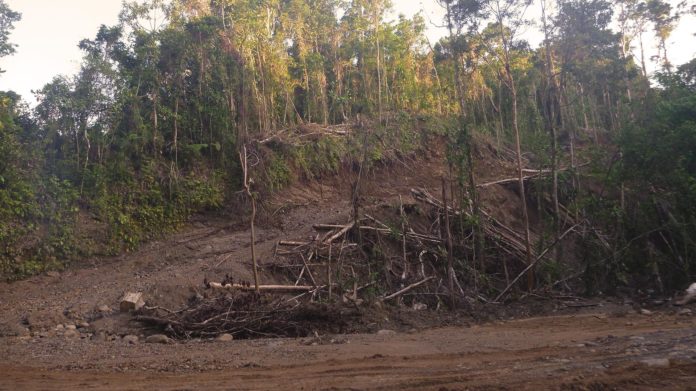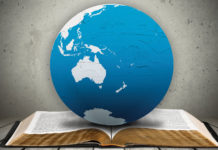Solomon Islands, a group of 900-plus oceanic islands and atolls, is a country ravaged by unsustainable logging. If you happen to fly over any large island within the archipelago, or simply view close-up aerial images of these islands on Google Earth, you cannot avoid the sight of recent and current logging activities on the landscape below. But appearances can be deceiving—not all the damage is visible from above. While most of the logged forests across the islands seem to have regenerated, forming a continuous mosaic of green cover carpeting the landscape from coast to inland, under these canopies lie thousands of lifeless stumps.
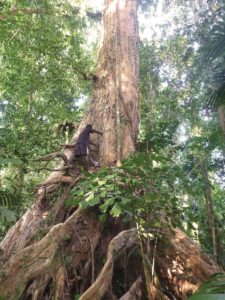
Unsustainable logging practices have generally hampered the recovery of logged forests in Solomon Islands. A decade of scientific research on post-logging recovery on Kolombangara Island in the Western Solomons has shown that plant diversity and architectural structure of logged forests have not recovered to their pre-logged state even after 50 years of natural regeneration. The study shows that unsustainable logging practices were the main cause of poor recovery patterns seen on the island. Other scientific studies have also confirmed that unsustainable logging has negatively impacted ecological connectivity between the land and sea. For example, earth-moving activities associated with logging—road-clearing and skidding—directly dislodge soil that is washed into rivers and streams that then transport loads of sediment into the sea. These sediments can cause death to soft-bodied animals within coral communities. These animals are mostly filter-feeders, meaning that they collect whatever food particles are suspended within the water. Excessive sediments in the ocean can be lethal to these delicate creatures. Dislodged sediments flowing through fresh waterways also reduce water quality to levels unsafe for human consumption and use. This is a serious problem in the Solomons, where most rural communities still depend heavily on rivers and streams for clean drinking water.
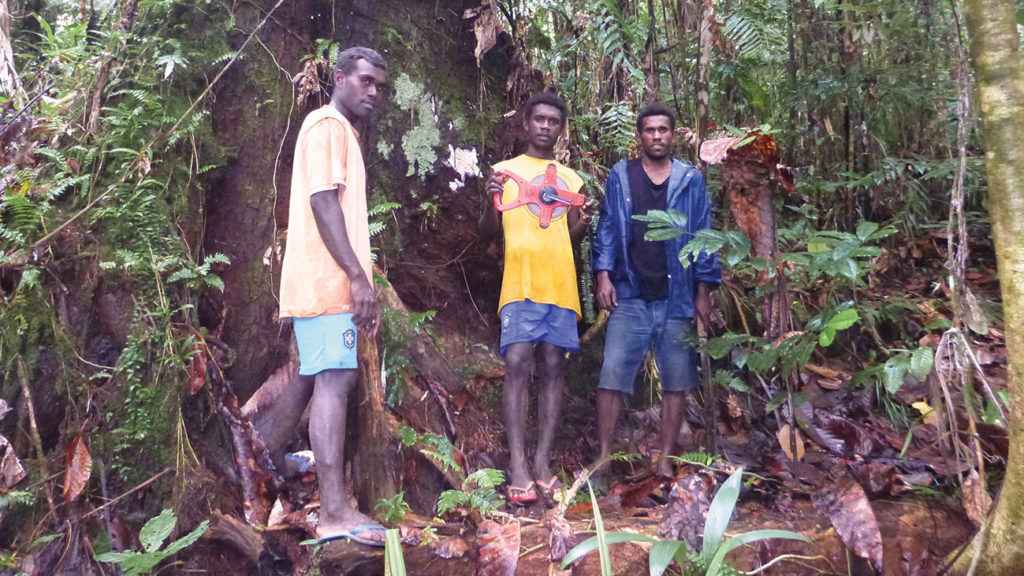
Over the years logging has become the most important driver of forest degradation in Solomon Islands. Unsustainable logging has thrived mainly due to the economic interests at both local and national levels. Over the past 50 years or so, logging has been a source of easily earned income for local landowners through royalty payments. Income from round log exports contributes to about 60–70 per cent of the country’s total export revenue, which just shows how important the logging industry is to the country’s fragile economy. Economically driven corruption within the industry, limited funding for forest monitoring, contention over royalty benefits within local communities and the lack of information for policy development to ensure sustainable logging have all provided the ideal environment for unsustainable logging to flourish over the years. As a result, most (if not all) accessible lowland forests in Solomon Islands will be logged within a decade. If this doesn’t sound bad enough, environmental NGO Global Witness, in its recent research on logging in the Solomon Islands, predicted that heavily logged forests might not recover at all, thereby resulting in fragmented remnant forest patches entwined with grassland. Our landscape will be permanently altered and who knows what further flow-on effects this will have.
A Biblical perspective
And yet, as is the case in most Pacific nations, the people of Solomon Islands overwhelmingly identify themselves as Christians. Does this not mean that we are stewards and custodians of God’s creation; all earthly resources entrusted to us in this life? In the churches, much emphasis has been placed on financial stewardship; we tend to do well in returning our tithes and offerings to God. We also attempt to practise good stewardship when it comes to managing our time and opportunities, abilities and non-monetary possessions. However, many times we fail miserably to realise that the blessings of this earth and its resources go far beyond the dimensions of our pockets and the balance of our bank accounts. Our stewardship responsibility also includes the natural environment on which we depend. Our earthly possessions include the natural forest ecosystems and the free services they provide to humanity—clean air, clear water, food, shelter and much more. Therefore, we have the responsibility to protect and sustainably manage our forests for future generations—that’s what we are required to do as God’s stewards.
The Bible tells us that, during the creation of the world, God planted a garden: “He put in the garden the man he had formed. The Lord God made every kind of tree grow out of the ground. The trees were pleasing to look at. Their fruit was good to eat” (Genesis 2:8,9). We see three important principles here. First, God created biodiversity—there was a wide variety of trees in the garden (“every kind”), not a plantation of one species. Second, the natural world and the trees God created were beautiful—“pleasing to look at”. To notice and preserve the beauty of the created world are acts of worship. And, third, God gave the garden as a sustainable resource—it was designed to provide for the needs of humans and other living creatures. It was not the kind of resource that would be smashed down, stripped bare and then abandoned, but an ongoing, carefully managed resource that was a healthy, productive and permanent place for people to live.
Later in biblical history, as the children of Israel came to Canaan, each tribe and family was given their land as a permanent possession. Again, they had to farm and care for the land sustainably, because their family would continue to live there for generations (see Exodus 23:10,11—this practice encourages soil health). But there was still “wilderness”—land left unfarmed and in its natural state. And it was in the wilderness that many of the prophets and others had their closest encounters with God—Abraham on Mount Moriah, Hagar at the spring, Moses at the burning bush, Elijah and the Still, Small Voice. To this day, many Christian believers find that they feel especially close to God in a natural environment untouched by the hand of man.
The final book of the Bible, Revelation, warns of a coming crisis as this world’s history nears its end. Revelation also warns of a judgement on evildoers—those who have resisted and rejected the gospel of God’s love, forgiveness and restoration and instead worshipped the satanic beasts. Judgement is pronounced against one particular group of evildoers in Revelation 11:18: “It is time to destroy those who destroy the earth.” We are faced today with “those who destroy the earth” through pollution, climate change, even the threat of nuclear weapons. And yes, through deforestation. The Bible warns of the consequences if this group does not repent.
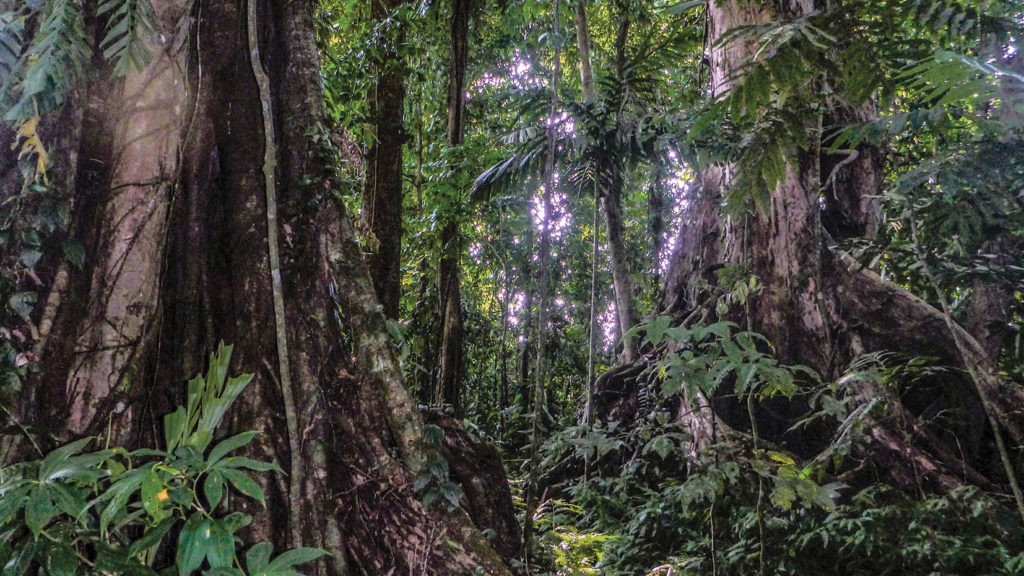
Logging sustainably
In Melanesia, the philosophy and practice of “sustainable logging” is considered far-fetched, sadly even among Bible-believing Christians. It is possible, however, to ensure that some measures of sustainability are taken when conducting or allowing a logging operation on your land. Here are a few tips on good forest stewardship:
1. First and foremost, consider alternative land-use income-generating activities that are less damaging to forest ecosystems, but can still produce economic benefits as compared to logging. If the decision to allow logging is made, advocate for “reduced-impact selective logging” as a less-damaging alternative—only certain tree species of a certain size can be taken via cautiously planned and controlled harvesting strategies.
2. Before logging begins, communities can first engage in a mapping exercise where all known resources important to the community are identified. This should include environmental resources, such as trees growing near rivers and streams that prevent soil erosion, as well as “buffer zones” around cultural sites and places valued for their natural beauty, such as hilltops, rock formations or waterfalls. The community can then mark areas of high conservation value as “no logging”.
3. When establishing communications with an interested logging company, make sure all decisions made under the previous point are clearly stated in the logging agreement. This will help with any later disputes.
4. While logging is happening on your land, ensure that the company strictly adheres to the agreement. If the company does not comply with the agreement, you have the right to report the situation to the government forestry officer overlooking your area and also to advise the company to stop its operation until a proper inspection is carried out.
5. Develop a plan for restoration of the land after logging. How can the logging company and the community work together to give the forest its best chance of regeneration? What local plant species can be nurtured and transplanted to cover logging-induced gaps?
6. Finally, we preach in our churches about giving one-tenth of our blessings to the Lord as tithe; why not commit 10 per cent of your best forested land to the Lord? Biodiversity and conservation researchers agree that 10 per cent of well-represented areas of a forest are indicative of the total biodiversity throughout the landscape.
I pray that, as we consider these issues, we will hear God’s call to stewardship in every area of our lives. He has given good gifts to His children, including the beauty and natural resources we find in our forests, rivers, mountains and oceans. He asks us now to take good care of what He has given.
Eric Katovai is a tropical ecologist from the Western and Choiseul provinces in the Solomons and is currently a senior lecturer in environmental science at the University of the South Pacific in Suva, Fiji. He previously studied and worked at universities in Australia, Fiji and Papua New Guinea.



